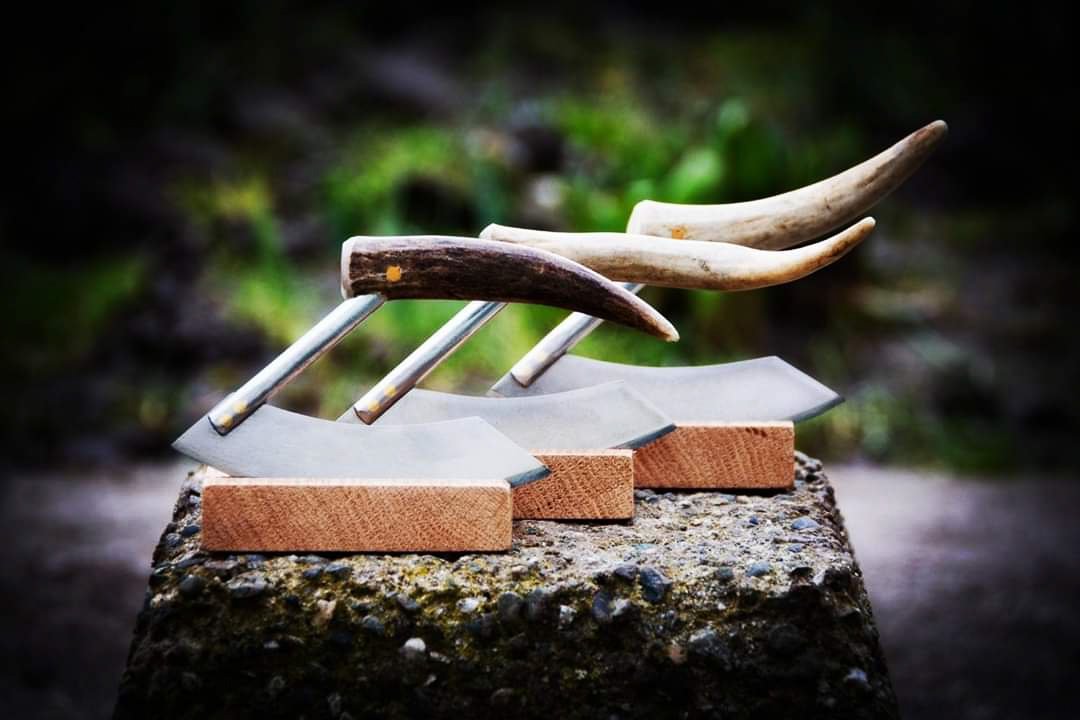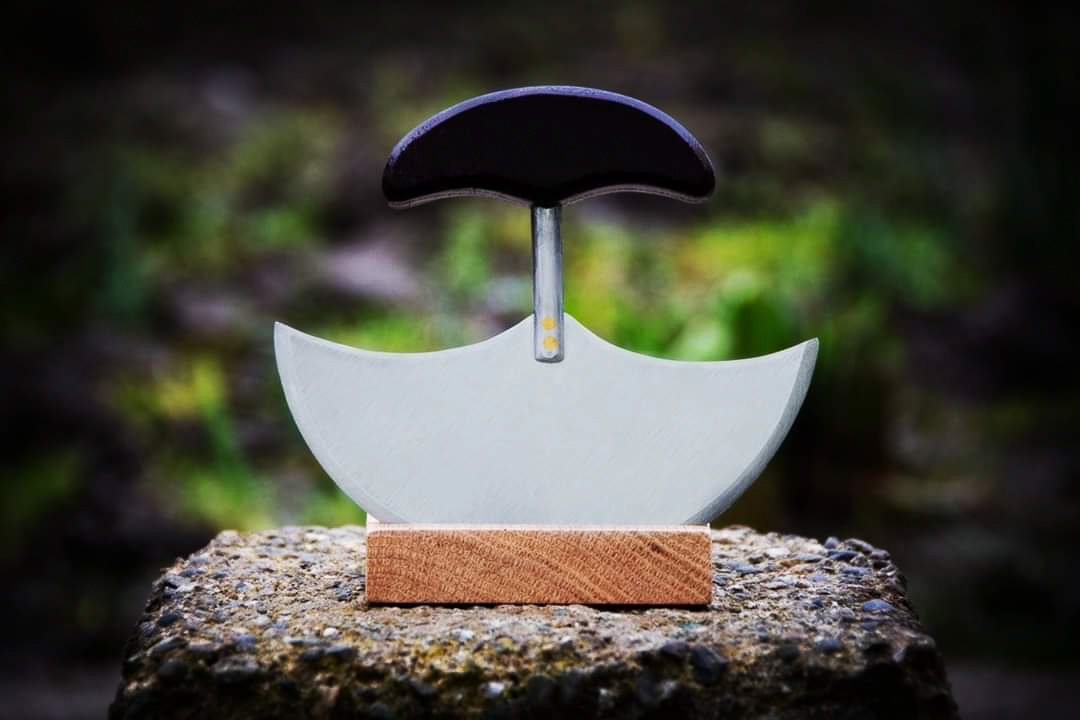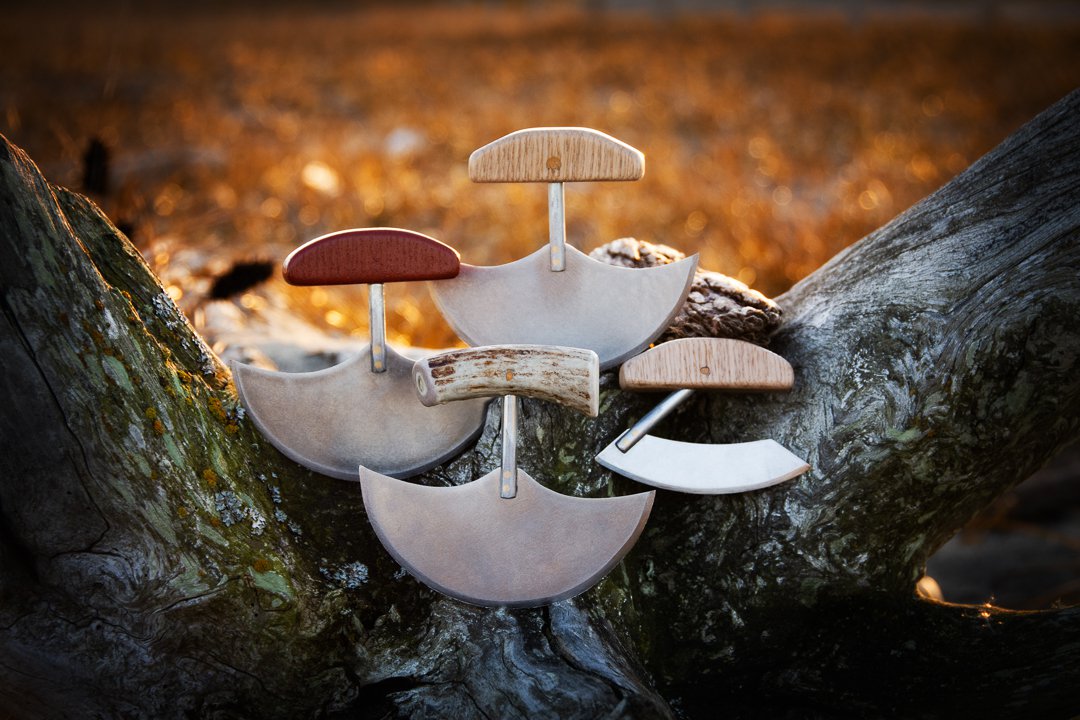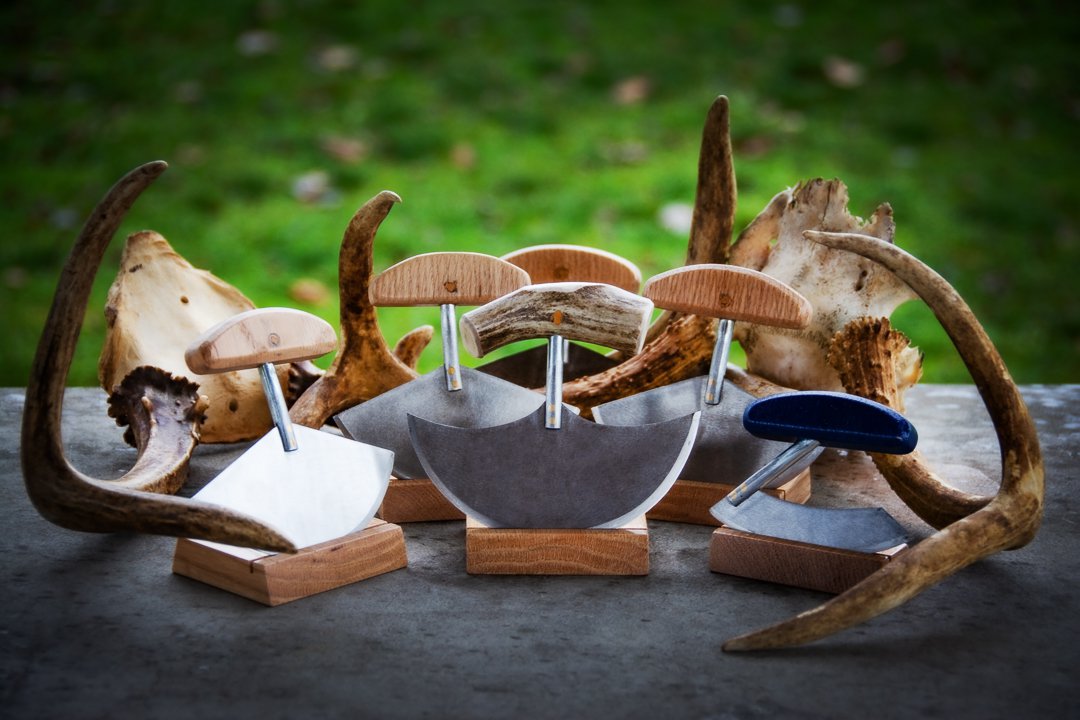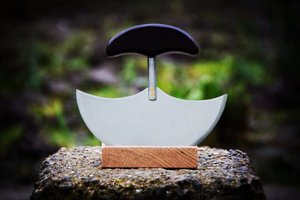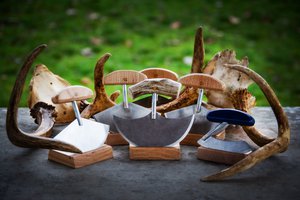
Kenneth Ingniqjuk Mackay is a Scottish-Inuk wood and metal worker based in Yellowknike, NWT. He uses his skills to craft uluit of all shapes and sizes as Urban Inuk Art. As an artist, he prides himself in the creation of eco-friendly art and tools that align with the values of Inuit Qaujimajatuqangit. We asked him about his trade and commitment to living out traditional values.
Q: What is an ulu and what is it used for?
A: An ulu is traditionally a woman's tool used for many tasks like cutting hide for sewing and food preparation. Of course, folks of all genders do use the ulu as it is useful for many things. Some of the modern day uses I love mine for are things like lasagnas, pies, brownies, herbs, really anything in the kitchen, and it is also the best pizza cutter there is. Our favourite use in our home is for cutting maktaaq (whale skin and fat).
Q: When did you make your first ulu?
A: I made my first ulu for Christmas 2018 for my wife. I had been wanting to make one for some time and had an old saw blade I thought would be great for it. We had just moved south for the first time and her family had sent a box of country food and we had no ulu to cut it with, so I decided it was time. She was very happy.
Q: Why did you continue making them?
A: When folks saw what I had made they began requesting I make uluit for them as well and it kind of took off from there. I really enjoy the process and it has given me a chance to connect to Inuit culture in a new way.
Q: Can you walk me through the process of making an ulu?
A: The first thing I do is draw out designs and cut templates. I fashion the blade, stem and handle separately before pinning them together. Then it's a matter of finishing and sharpening.
Q: Explain your philosophy of eco-friendly art and tools that aligns with the values of Inuit Qaujimajatuqangit.
A: This is nothing new for Inuit. Inuit Qaujimajatuqangit is a holistic and balanced way of existing in your environment. Inuit have always practiced and passed on the values of being resourceful and never wasteful. Making uluit from discarded materials that would otherwise end up in a landfill is just my way of living out those values in a modern context.
Q: Why do you think it’s so important to live out traditional teachings in a modern world?
A: The world has changed so much, and some Inuit ways have been forever changed, but I really think Inuit values are more relevant than ever. As humans, we seem to have fallen out of balance with our environment. I know we can never go back, but maybe there is a way forward that is still informed by all the knowledge of the past.
Q: Do you have a favourite ulu that you’ve made, and why?
A: The first ulu I ever made for my wife will always be my favourite. I will never forget how happy she was when she used the ulu I made her to cut food for our children.






